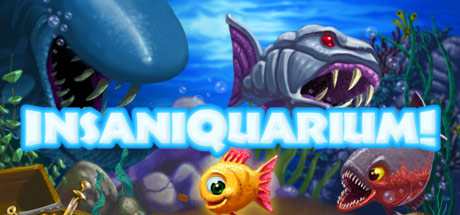“Looking to bring the fun of Insaniquarium Deluxe to your Steam Deck? Look no further! In this guide, we’ll show you how to get the Insaniquarium screensaver up and running in game mode on your Steam Deck. Get ready to dive into the virtual aquarium world with ease!”
Step By Step Instructions
2. In desktop mode open Steam, go to Insaniquarium -> Right click -> Manage -> Browse Local Files
3. In the new file browser window right click WinFish_Scr.exe -> Add to Steam
4. Open Steam and play WinFish_Scr.exe. It will take a minute to launch, then crash. This is fine.
5. Open desktop mode’s file browser (Dolphin), and if it isn’t already set to show hidden files click the triple line button at the top right and check Show Hidden Files
6. Navigate to go to Home/.steam/steam/steamapps/compatdata. You should see some folders that are all numbered and very difficult to tell apart for us humans.
7. Click the 3 line menu button at the top right (again) and go to Sort By -> Modified
8. Assuming you are following the guide and not getting distracted, the last 2 steam applications you ran were Insaniquarium, and then our failed screensaver attempt. This is important.
9. Open the 2nd to last folder (for me it was number “3320” but I believe this will be different for everybody), then from there click into pfx/drive_c/ProgramData/Steam/Insaniquarium. You should see a userdata folder filled with several files ending in “.dat”. This confirms that it is your main game save folder. Take note of the folder number (where I had “3320” at the top of this step)
10. Go back to Home/.steam/steam/steamapps/compatdata (where all the number folders were) and then open the last folder in the list (for me it was “3163917195”). From here click into pfx/drive_c/ProgramData/Steam/Insaniquarium. You should see a screensaver error file, which proves that this is the folder for the screensaver files and not the game’s save files. Note that this folder number is your screensaver folder.
11. If the screensaver error log is there, then you are definitely in the screensaver folder so it is safe to continue. Click Back to go up one level to pfx/drive_c/ProgramData/Steam/. Delete the Insaniquarium folder you see. IF YOU DO NOT SEE THE SCREENSAVER ERROR FILE – you may be in the wrong folder. Do not delete anything or you may accidentally delete your save files.
12. Right click anywhere in the window and go to Open Terminal Here
13. Copy & paste this into the terminal without the quotes, and replace anything in <brackets> with the numbers we noted in steps 9 & 10:
“ln -s <GameFolderNumber>/pfx/drive_c/ProgramData/Steam/Insaniquarium <ScreensaverFolderNumber>/pfx/drive_c/ProgramData/Steam/”
For example, with the folder numbers I had I typed:
ln -s 3320/pfx/drive_c/ProgramData/Steam/Insaniquarium 3163917195/pfx/drive_c/ProgramData/Steam/
14. Press enter and it should make what looks like a shortcut to your main game save in the screenshot folder. If you go back into steam it should run now whether you are in Desktop or Game mode
Explanation
Any game that was made for Windows (like Insaniquarium) runs through Proton since the Steam Deck runs on Linux. Each game that runs in Proton gets its own folder that has an imitation of a Windows hard drive structure in it (these are all the numbered folders we saw). This is so when a Windows based game tries to do something like save in the “C:\users\<username>\AppData” folder that every Windows account has, it doesn’t crash when it finds out that it doesn’t exist in Linux. Instead Proton pretends the folder is there and everything is normal so the game can continue running.
Insaniquarium’s screensaver uses the same save files as Insaniquarium does, but because it is a separate executable, it will run in its own separate Proton folder. This means it wouldn’t normally have access to the other Proton folder that the game runs in. If you check the screensaver error log it will say something like “User profile not found” to point to this fact.
To get around this, we delete the save directory in the screensaver Proton directory, and use the terminal to create a symbolic link to the game’s Proton directory. This is essentially a shortcut that most programs will assume is the actual folder. Now when the screensaver tries to get into its own save folder, it hits the symbolic link we made and gets redirected to the game’s save folder so they can finally share files.
Now that it can find the user data, the screensaver should finally run like it used to back in its old Windows XP days.
And that wraps up our share on Insaniquarium! Deluxe: Insaniquarium Screensaver on Steam Deck. If you have any additional insights or tips to contribute, don’t hesitate to drop a comment below. For a more in-depth read, you can refer to the original article here by IKenberries, who deserves all the credit. Happy gaming!
